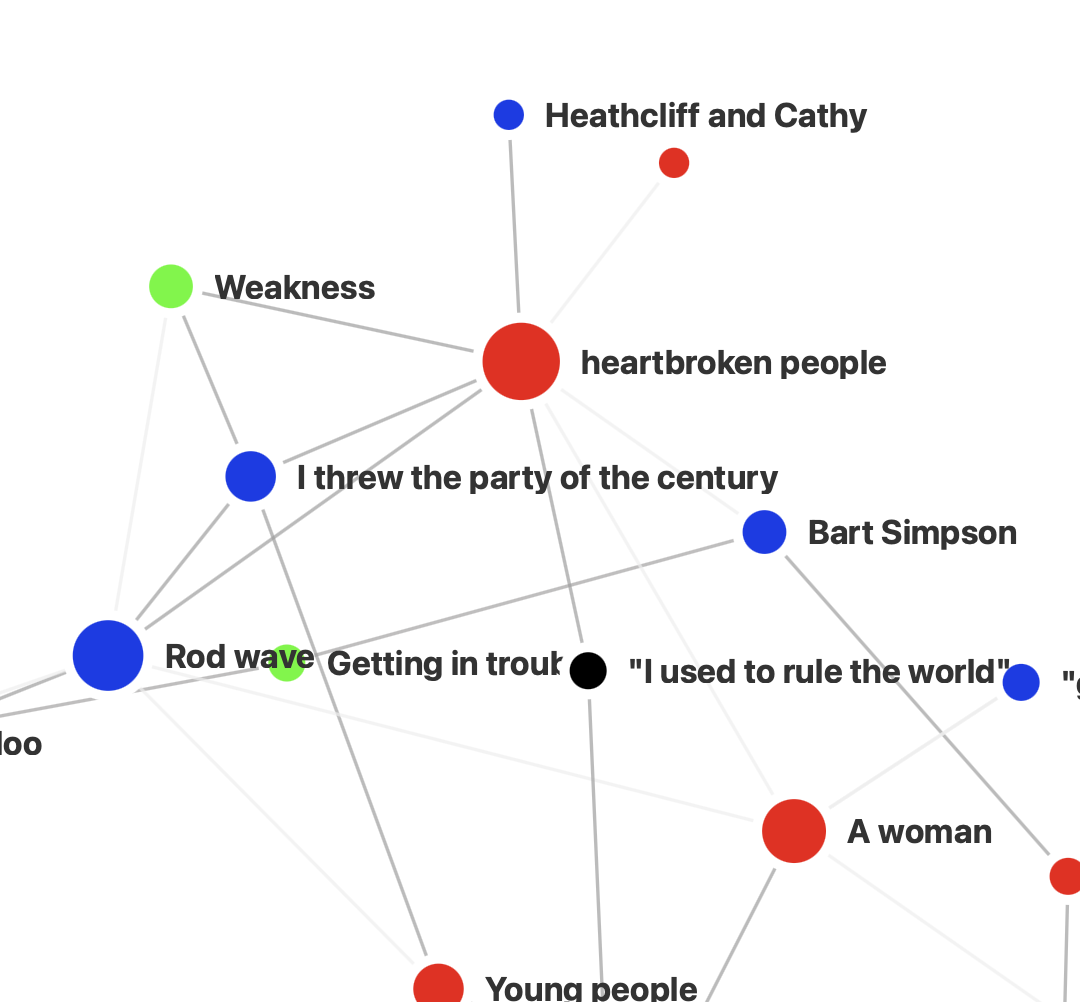
Should I choose this template?
Allusions are everywhere, from sports broadcasts to remakes. But not all students have the right set of references to find or understand the allusions in the sources they’re working with.
Are there allusions in literary works that your students are reading that they struggle to identify? Do you want to support them as they learn more about both familiar and unfamiliar allusions in their reading? The Allusions network template helps students to:
- identify allusions to and between works they have read
- to understand how literary works are influenced by each other and are influencing other literary works.
When should I use this template?
Anytime you want students to build a set of references because you are working with sources that have unfamiliar references that connect to other readings.
What sources work best?
Sources that are influenced by something else or have lots of references that students need to track.
- The Looking Glass Wars is built on the framework from Lewis Carroll’s Alice in Wonderland.
- Shakespeare plays often use biblical references
- Percy Jackson uses Greek mythology as its starting point.
What’s the investment in time and effort for this network?
Time: two class periods. One to get students used to the network as they identify and enter allusions and their sources. The second class period provides time to revise/add additional allusions and discuss the patterns students see in the allusions they entered.
Teacher support: Teachers will need to
- understand the basics of Net.Create (node and edge entry). See this basic-data-entry video!
- how to use one network filter (the “Ego” filter). See this Ego-filter video!
How should I use this template?
Network Details: What should my students and I be tracking?
For any network, students will track nodes (things) and edges (relationships between things), each of which will also have “attributes” (which include mandatory info like citations and optional info like extra notes).
Nodes (things being connected)
In this network, the nodes represent the allusions identified within the work and who those allusions are aimed at.
- Allusion: A quote that has a built-in reference to something else. For example, if we were reading The Looking Glass Wars (a 21st-century adaptation of Alice in Wonderland), we would enter “Alyss,” the name of the main character..
- Example: The reference. If our allusion is Alyss from The Looking Glass Wars, then we’d enter “Alice in Alice in Wonderland”
- Audience: The audience who would understand either the Allusion or the Example. For example, the audience for Alyss would be “21st-century Young Adults”
Edges (connection types)
In this network, the edges connect allusions to their original sources and to the audiences for both allusions and original sources.
- Builds on: We’d use “Builds On” to connect the “Alyss” Looking Glass Wars node to the “Alice Wonderland” node.
- Relates to: We’d use “Relates To” to connect the “People in 19th-century England” node to the “Alice in Wonderland” node to indicate
What learning goals does this template support?
- Disciplinary goals
- CCSS.ELA-Literacy.RL.8.4: Determine the meaning of words and phrases as they are used in a text, including figurative and connotative meanings; analyze the impact of specific word choices on meaning and tone, including analogies or allusions to other texts.
- CCSS.ELA-Literacy.RL.8.9: Analyze how a modern work of fiction draws on themes, patterns of events, or character types from myths, traditional stories, or religious works such as the Bible, including describing how the material is rendered new.
What data literacy outcomes does this template support?
- Data is interpreted, and we can even create it. Students will choose specific character traits and quotes from primary sources and enter them into a network, allowing them to explore their and their peer’s interpretation of historical figures’ traits in the context of both the original narrative and the data their peers entered. Creating the network themselves can help them appreciate that all visualizations are created by someone with ideas, interests, and biases.
- Students will learn to integrate individual data points and aggregate data patterns. Individual data points may inform certain questions, while patterns within and across datasets help answer others.
Resources for classroom use
Examples
- Allusions to Alice in Wonderland in Looking Glass Wars
- Pop Culture Allusions to Shakespeare’s A Midsummer Night’s Dream
General Net.Create Tips, Tricks and Documentation
- Advice from Experienced Net.Create Middle-School Teachers: Our partner teachers who have used Net.Create extensively in their own middle-school classrooms prepped a short set of recommendations for getting comfortable with Net.Create, prepping effective lessons and handling common classroom-management needs.
- Network-analysis learning resources

More about this item
Dublin Core
